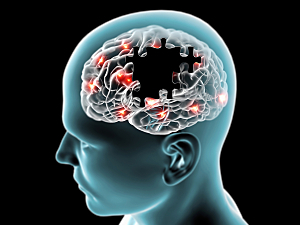Genome-wide association studies and mouse models have identified overexpression of synaptotagmin-11 (Syt11) as a risk factor for Parkinson’s disease (PD). This protein is expressed almost exclusively in the brain tissue, disrupting vesicular trafficking, a fundamental feature of PD.
Syt11 shares that function with the neuronal protein α-synuclein (αS), which has a key role in Parkinson’s disease. αS binds to vesicle membranes and is the principal component of Lewy bodies and Lewy neurites, the hallmark PD pathology.
Gary P.H. Ho, MD, PhD, a neurologist in the Ann Romney Center for Neurologic Diseases at Brigham and Women’s Hospital, Dennis J. Selkoe, MD, co-director of the Center, and colleagues suspected there might be a functional link between Syt11 and αS in the context of Parkinson’s disease. In Science Signaling, they demonstrate such a connection does exist: palmitoylation of Syt11 promotes pathological accumulation of αS.
Key Observations
The team’s principal findings were:
- Syt11 was palmitoylated in mouse and human brain tissue and in cultured cortical neurons (“palmitoylation” refers to the post-translational addition of a long-chain fatty acid to cysteines)
- The modification of Syt11 disrupted αS homeostasis in neurons
- Palmitoylation of two cysteines adjacent to the transmembrane domain, Cys39, and Cys40, stabilized Syt11 and localized it to certain portions of intracellular membranes where it was protected from degradation by the endolysosomal system
- Palmitoylation of Syt11 in neurons increased its abundance and enhanced the binding of αS to intracellular membranes, which decreased the physiologic form of αS and increased the pathological, aggregation-prone form—thereby exacerbating the risk of Parkinson’s disease progression
Therapeutic Implications
Targeting the palmitoylation cycle of Syt11 may have therapeutic benefits for Parkinson’s disease. Specifically, inhibiting or genetically knocking down the palmitoyltransferase responsible for Syt11 may reduce its palmitoylation levels and restore αS homeostasis. The Brigham team is studying that approach now.
